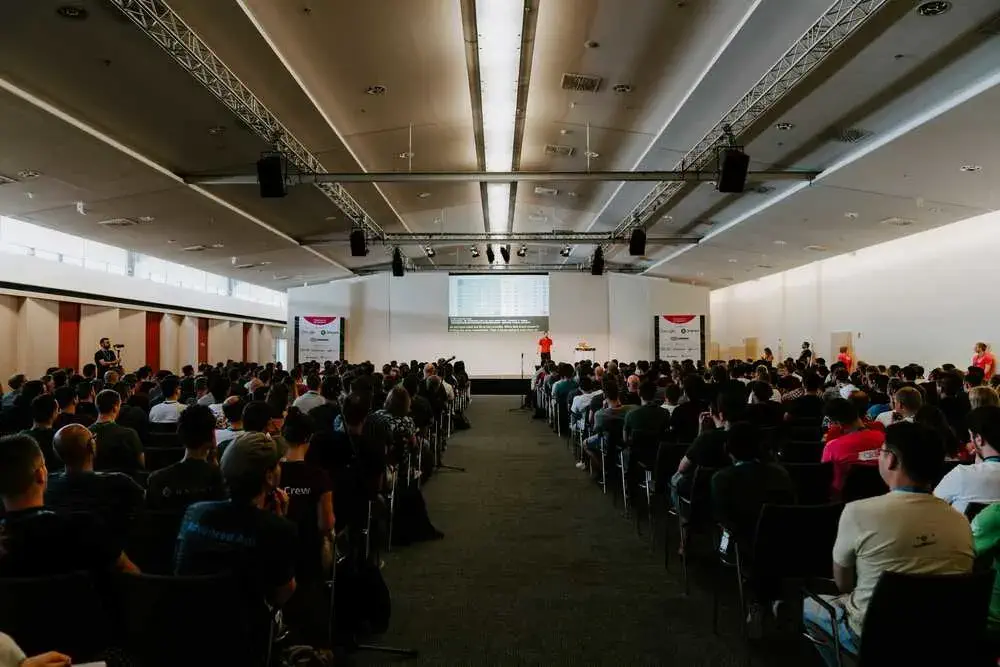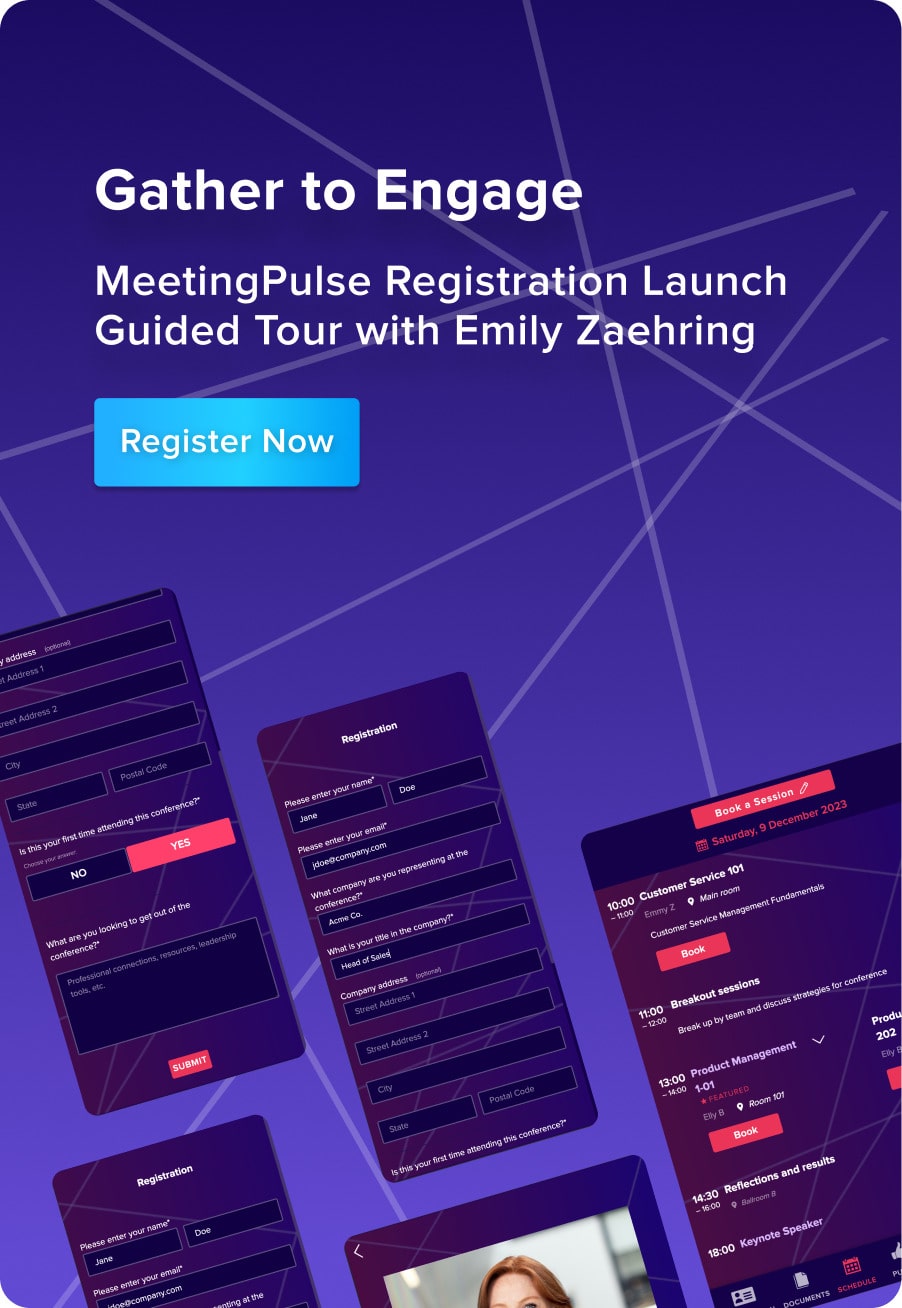Brainstorming sessions can help you to come up with solutions you may have never thought of on your own, and see the situation in a new light. Some may find brainstorming sessions to be impossible when everyone’s working remotely during the pandemic.
But we at MeetingPulse will show you how to structure your online brainstorm session to generate great ideas. If you’re interested in having productive brainstorming sessions, keep reading to find out some key strategies and ways to avoid common pain points.
What Is a Brainstorming Session?
A brainstorming session occurs when you generate new ideas for a project or business venture. You can brainstorm a solution to help with an issue in your professional or personal life.
Overall, brainstorming is when you set aside time to focus and try to think of an idea or solution to make your life, situation, or job easier. Group brainstorming sessions work the same way, but with more brainpower and opportunities for collaboration.
How Does Online Brainstorming Help Generate Ideas?
Group brainstorming sessions can help by putting a few minds together and developing ideas with collaboration. When you have more than one outlook for a situation in a brainstorming session, it can help to generate ideas that the entire team supports, not to mention ideas that a single person might not be able to think of on their own.
If you’re brainstorming by yourself, you may jot down any ideas or situations that come to mind while thinking about the situation at hand. This is often more frustrating, and executing big projects or making significant changes alone sends the message to your team that you don’t want to hear their input.
The Importance Of Framing the Problem

When you sit down to brainstorm examples with a group, you will most likely be trying to find a solution to an issue using creativity and logic. One of the most important aspects of brainstorming is framing the topic correctly so you can find the best solution.
Framing your brainstorming process is important because it allows you to state the problem or situation you would like to brainstorm on, and then set a goal on what you’d like to achieve in the process.
If you’re having trouble, framing the topic can help greatly. If you find that you keep hitting a wall, go ahead and rephrase the problem a few different ways and see what solutions you come up with after rephrasing the initial issue.
What Should a Brainstorming Session Entail?
Overall, a brainstorming session should entail a few things to make it effective. Below, you will find our brainstorming examples on what a session should have.
Clearly Identifying the Problem
The key to a coherent brainstorming session is letting attendees know the problem or question at hand. It’s true that brainstorming sessions should be a chance to generate creative ideas, and some of those ideas might stem from tangential thoughts.
But problems that aren’t clearly defined won’t aid creativity — they’ll hinder it. Instead, clearly articulating one or two specific issues will give your attendees heightened focus. From there, they’ll get a chance to explore their ideas and show off their creativity for the whole team to benefit.
Selecting the Right People
When you are doing a brainstorming session with a team, make sure you choose the right people to help you brainstorm and bounce ideas off of. Ideally, those you choose should also be working to solve the same problem and want the same outcome of the issue.
A large team can be great for coming up with new ideas from scratch, but if you’re dealing with a more specific problem, it might be better to host a smaller group brainstorming session.
You should select people based on expertise — just because people want to solve a problem doesn’t mean they can. Consider the amount of time they’ve spent with the company, previous good ideas they’ve had, successes on important projects, and any relevant certifications or attended training sessions.
Assign a Moderator
Assigning a moderator improves the effectiveness of a brainstorming session. Brainstorming sessions render pointless if they do not result in a beneficial outcome, so carefully assigning the right person is imperative.
When multiple people are trying to solve the same problem, there may be a lot of ideas going different directions or differences of opinions. That’s where the moderator steps in as a neutral person in charge of guiding the session and keeping the discussion focused on the problem.
This person acts as an authoritative figure and helps ensure the brainstorming session is productive. As the moderator, they are responsible for ensuring everyone is heard, constructive inputs receive respect and consideration, the group discussion doesn’t stray off-topic, and the session progresses in a timely manner.
A Proper Time Limit
Without proper time-limits, brainstorming sessions quickly become inefficient and unproductive. Determining an appropriate limit depends on the extent of the problem, the level of expertise, and the size of the group selected.
The size and difficulty of the problem have a positive correlation to the amount of time needed to brainstorm a solution: more robust problems require higher limits. However, there is a negative correlating relationship between the level of expertise and the amount of time needed to brainstorm a solution. If a group is more knowledgeable, less time is suitable for brainstorming.
Team cohesion also affects the amount of time needed. Smaller groups tend to be more cohesive and require a lower time limit. Larger groups may still work together well, yet they naturally require more time. Considering the people selected, their ability to work well together, and their level of expertise will help you determine the appropriate time-limit.
Setting Goals
After identifying the problem you’d like to brainstorm on and asking your initial question a few different ways, it’s time to set goals for your session. Make sure you set goals on what you’d like to achieve during your brainstorming time.
Good goals to set are things such as: finding a creative way to solve the problem, use no plastics in our solution, come up with 3 ideas to solve the issue, and so on. By setting realistic goals, you can have expectations for your group and set up a great session before it begins. Make sure these goals are easily available for every attendee.
Asking Questions
As stated above, you should ask questions to begin your brainstorming process. You should first state what the initial question is. From here, rephrase the question a few different ways so it can be looked at from different angles and entice different solutions.
Sharing Ideas
One of the best parts about brainstorming with a group is sharing ideas. When you brainstorm with at least one other person, you are bringing a different viewpoint into your group. This means they may have different ideas and views that you might not come up with on your own.
When an idea comes to mind, you should share it with the group. They can give you feedback and hopefully you will plant some seeds for further ideas to come about.
Encourage Wild Ideas
Outside of the box is where some of the best solutions come to life, so you should always encourage creativity in brainstorming sessions. People often refrain from sharing outlandish ideas because they don’t want to seem foolish, unrealistic, or disrupting. Some people are timid about straying from the status quo, especially when they lack the support to do so. Yet, innovation requires trying something different, new, or un-heard-of.
Encouraging wild ideas also inspires more engagement throughout the group. As people are encouraged to share their wild ideas, more ideas stem from that and are evolved into a viable solution. Breaking the barriers and stimulating creativity is essential to brainstorming. The more creative the group is, the quicker a solution may be found.
But Stay Focused
Staying focused is critical for successful brainstorming sessions. Without focus, the session becomes a perfect opportunity for unproductive conversation. If the group begins to stray off-topic, they waste time, and a real solution is further from being found.
Brainstorming with collaboration presents additional opportunities to lose focus because of the varying personalities and working styles. One way of reigning in each person’s concentration is by circling back to the original problem and the ideas already discussed.
Another way to retain the focus of the group is to write the ideas down as the discussion continues so that people have a tangible reference for the previous thoughts and suggestions and can easily see the progression of the brainstorming session.
How To Make Online Brainstorming a Habit
After a few successful sessions of brainstorming, your team should have come up with great ideas. If brainstorming has helped you to find new ways to approach a problem and solve it, you may want to make it a habit for yourself or your team.
Meeting Pulse can help you make brainstorming a habit. With our Live Q&A session software and online team brainstorming tool, you can ask questions to your team and invite them to share ideas. Reddit style upvoting makes it feel like a collaborative forum, and the document feature allows people to access important documents with goals and agendas clearly articulated.
To make brainstorming a habit, try to do it at least once with every major project or issue that comes to light. You can also have your team meet once a week or once a month to build the habit. Overall, habits are built by repetitiveness.
Related: Elon Musk and Jeff Bezos’ Tips for Running a Great Meeting
Strategies to Increase Brainstorm Session Engagement

Some brainstorming sessions may not be as easy and fruitful as other ones. To help you get past a wall, we have come up with a few strategies to help get those creative juices flowing.
The first thing you should do when a mental block happens is to get creative. Come up with some outlandish ideas to loosen up the team. Also, try to break down and analyze existing ideas to spark some inspiration.
Also, remember that no idea is a bad idea. If it’s not the best you’ve ever heard, you can probably build off of it or take something away. The key to moving past a block is to be open to all ideas.
Open Space Brainstorming
One of the most efficient ways to brainstorm is to do it in an open space. This space could be a whole room dedicated to your session and have tools such as whiteboards and cork boards available for pinning down ideas. Here are a few tools to help with your open space brainstorming sessions:
Diagrams and Word Clouds
Use a whiteboard or a tablet to write down any diagrams that come to mind. These diagrams can be designs or even charts.
Another strategy you can do is a word cloud. Start out with a single word and branch off to similar words that relate to the starting word and the issue at hand. You can also do a virtual word cloud and collect audience feedback through a polling feature. And that brings us to another great strategy.
Live Polling
If you come to a fork in the road with two ideas or can’t choose, try live polling your group. By having a live poll, people will get to state what idea they favor, and you can talk through why each person agrees and disagrees to hopefully spark some new inspiration.
Verbal Presentations
If someone comes up with an idea, instead of shouting it out to the group, they can verbally present their idea. If they walk you through their idea, then it may spark new solutions. Encourage people to come prepared with presentations and have them screenshare. 
Overcoming Common Brainstorm Challenges

Whenever you work in a group, there are bound to be some issues that may not make your brainstorming as effective as you would like. Below, we have outlined some common group issues and how to work through them:
Brainstorming with Different Personalities
When different personalities are put in a room, there’s bound to be some clashes. To get through this problem, make sure to state that no idea is a dumb idea and also have a designated mediator for when things get out of hand.
Brainstorming Across Departments
If you are brainstorming with multiple departments, there may be some miscommunication. Make sure to tell everyone in the room that if someone doesn’t understand something, try to explain it to them. Having the heads of more than one department can be effective if everyone can understand they are on common ground.
Using Empathy and Engagement to Brainstorm
Sometimes, brainstorming sessions may seem as if they are going nowhere. If this is the case, make it less formal and include some feelings as to why you are passionate about the problem and why your feelings led you to have your ideas. This will promote engagement and hopefully get those creative juices flowing again.
Related: Tips to Improve Communication in the Workplace
Staying Focused While Brainstorming Remotely
Staying focused while brainstorming remotely is particularly challenging because of the additional factors in each person’s work setting and the inability to read body language or connect physical chemistry.
To ensure team members are staying focused, you or the moderator should engage with each group member and ask questions about their ideas. You may also consider requiring each person to turn on their video camera so that a more significant connection forms between group members. Video holds each person accountable for their attentiveness and encourages participation.
Most importantly, prior to starting, ensure each person in the online brainstorming session is in a quiet space that won’t be distracting for themselves or others. If there are other people or things in the room that may distract focus, placing a board or a sheet around the workspace will help diminish that distraction.
Conclusion
We have covered what brainstorming is and how it can help benefit any issue or problem that arises in your personal life or professional career. By using our tips, you are sure to have one of the best brainstorming sessions in your life.
MeetingPulse can help you hold better brainstorming sessions with tools to increase engagement. Our brainstorming function lets you ask session attendees questions through a simple link and/or with PowerPoint integration.
They can submit their thoughts, and you’ll be able to share their input with the team, live. With MeetingPulse, you won’t have to slow down to write things out on a whiteboard or write word clouds down on paper. Attendees can type out what they have to say as quickly as they come up with new ideas, and your brainstorm sessions will be more efficient than ever.
For more meeting ideas and tips be sure to check out the rest of our website here.






